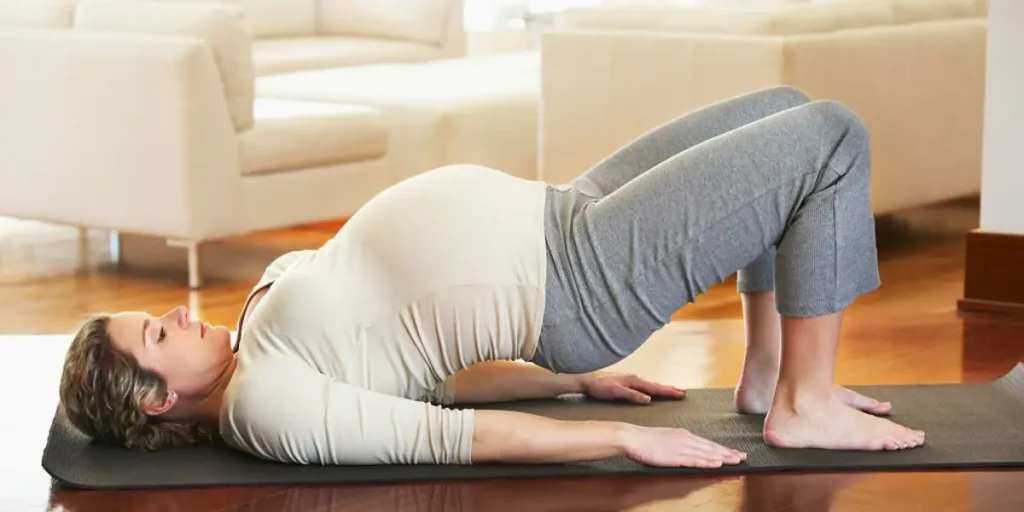Pregnancy is a miraculous journey of life. As you embrace the joy of nurturing a new life inside you, your body undergoes many changes. Among these changes, some pregnant women experience discomfort, notably in the inner thigh region. This specific pain can range from a mild annoyance to a concerning hindrance in daily life activities. Thankfully, through awareness, targeted exercises, and some additional self-care methods, this discomfort can be managed. Let’s dive in and explore the causes and remedies in this article.
Understanding The Causes Of Inner Thigh Pain
The pain’s origin in the inner thigh during pregnancy is attributed mainly to the changes in the pelvic area. As weeks turn into months, the body releases a hormone called relaxin. This hormone, as the name suggests, assists in relaxing the uterine muscles, ensuring they don’t contract prematurely. Besides this primary function, relaxin also plays a role in softening the pelvic ligaments and expanding the cervix to pave the way for childbirth. As a result, the evolving pelvic structure can exert increased pressure on the surrounding areas, particularly the inner thighs.

The growing baby adds weight and pressure on the mother’s physique. This additional weight, combined with the gravitation pull, strains muscles and ligaments. The resulting tension can manifest as discomfort or outright pain in the thighs.
Effective Exercises To Prevent Inner Thigh Pain
- Butterfly stretch: Find a soft place to sit. Put the bottoms of your feet together. Hold your feet with your hands and push your knees down slowly. This move stretches and makes your upper leg muscles stronger. Stay like this for 20-30 seconds, breathing slowly and evenly.
- Standing Thigh Stretch: Find a steady wall or furniture for support. With a straight posture, bend one knee and grasp your ankle with the hand on the same side. Draw your foot towards your rear, ensuring the stretch focuses on the front of your thigh. Maintain this for 20-30 seconds, then alternate legs.
- Side Leg lifts: Using a yoga mat or a soft carpet, lie on your side with your body in a straight line. Keep the bottom leg slightly bent for stability. Lift the top leg to a 45-degree angle, pausing briefly at the peak of the lift. Gradually lower it. Execute 10-12 reps before switching sides.
- Pelvic tilts: Begin by positioning yourself on your back. Ensure your knees are bent, and place your feet flat on the ground, spaced at the shoulder-width. Next, focus on your core muscles, pulling them tight. As you do this, press your lower back firmly against the floor. This gentle exercise is excellent for reinforcing both your core and pelvic muscles. Try to do this movement about 10-12 times.
- Hip Flexor Stretch: Adopt a lunge stance with one foot forward and the other stretched behind. As you bend the front knee, advance your hips forward. This movement will stretch the hip and thigh of the trailing leg. Hold for 20-30 seconds and then transition to the other leg.
Related: Can You Play Volleyball During Pregnancy?: Risks And Benefits Explained
Additional Tips For Alleviating Inner Thigh Pain
- Prenatal massages: Regular sessions with a prenatal massage expert can do wonders. They are trained and focus on specific regions like the inner thigh, offering tailored relief.
- Warm baths: Submerging in warm water provides universal muscle relaxation. A warm bath, especially when combined with Epsom salts, can significantly ease muscle tension in the thighs.
- Supportive footwear: Investing in comfortable, supportive shoes can aid in maintaining an optimal posture. It relieves unnecessary strain on the thighs and lower back.
- Maintain good posture: Whether standing, sitting, or lying down, proper posture reduces muscle strain, providing less pressure on your thighs and pelvis.
Conclusion
In summary, the pregnancy journey doubtless brings unparalleled joy. However, it is not without its challenges. The common complaint most pregnant women have is inner thigh pain. By understanding its roots and integrating specific exercises into your daily routine, you can substantially reduce discomfort.
Furthermore, it is essential always to remember one thing: Before starting any new exercise or routine, it is necessary to seek advice from your healthcare provider or gynecologist. Prioritizing comfort and well-being is crucial as you steer this magical journey.